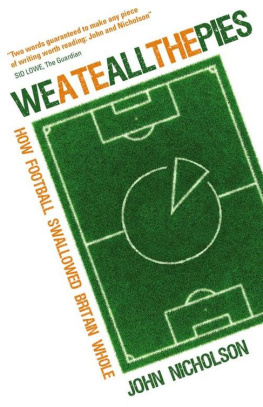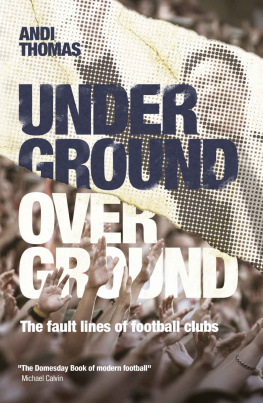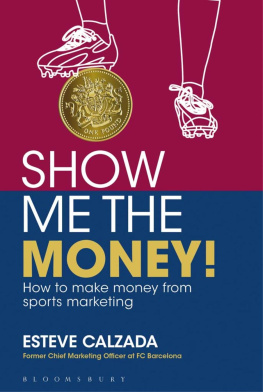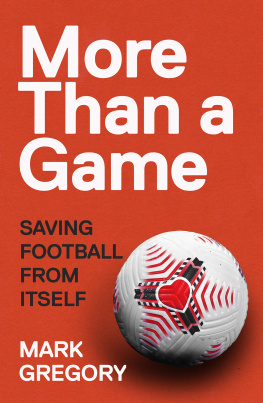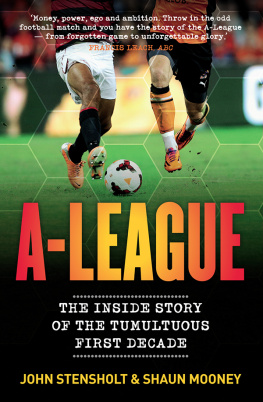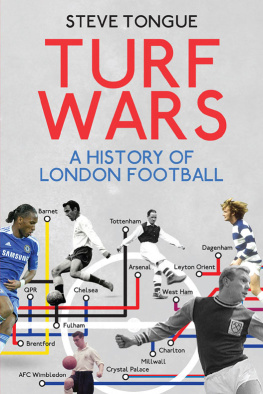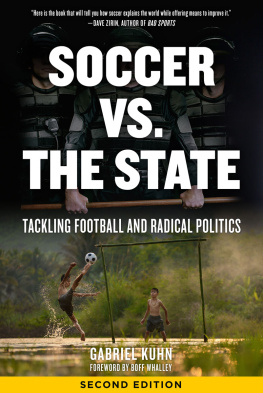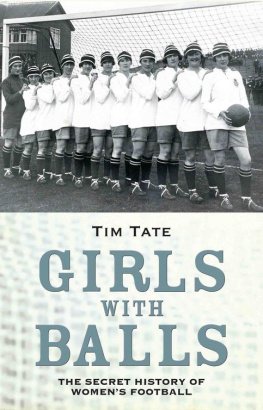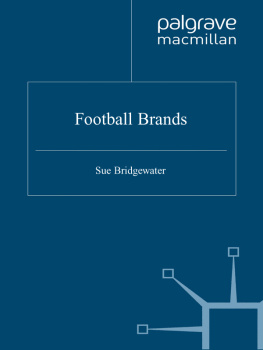THE PRICE OF FOOTBALL
THE PRICE OF FOOTBALL
Understanding Football Club Finance
KIERAN MAGUIRE
Kieran Maguire 2020
This book is copyright under the Berne Convention.
No reproduction without permission.
All rights reserved.
First edition published in 2020 by Agenda Publishing
Agenda Publishing Limited
The Core
Bath Lane
Newcastle Helix
Newcastle upon Tyne
NE4 5TF
www.agendapub.com
ISBN 978-1-911116-89-9 (hardcover)
ISBN 978-1-911116-90-5 (paperback)
British Library Cataloguing-in-Publication Data
A catalogue record for this book is available from the British Library
Typeset by Newgen Publishing UK
CONTENTS
In an ideal world this book would not need to be written as there would be no interest or demand for it. Football is the worlds most universal sport, on both a domestic and international stage and all the discussion from fans and others should be about goals, saves, formations, VAR, red and yellow cards, managerial decisions and shouting obscenities at Mike Dean (other referees are also available).
But at what cost can we ignore the financial impact of the sport? For football fans, many of the top ten moments in their lives will be football related yet ask them what they dislike most about the game and you will most likely hear that money has ruined it. Transfer fees, footballers wages, clubs being bought and sold on a whim as rich mens toys, arguments over the objectives and application of financial fair play all this and more has, in the eyes of many, turned a much loved, emotionally-fuelled sport into a cold, callous business.
The idea for this book arose by accident. I was on the BBC 1 Breakfast couch, having been asked to fill in the gaps between Carol Kirkwoods regular weather forecasts, and was talking about the latest television deal for the Premier League; the publisher of Agenda, Steven Gerrard (no, not that one) was eating his Weetabix watching the television at the time and thought that football finance would be a good idea for a book.
The central focus of this book is the influence of money and finance on the game. It seeks to discuss the big questions that spring to mind and simplify in laymans terms wherever possible some key finance related issues. Questions such as what are the sources of income, both internal and external, for a club? How do you show those sources in the accounts? How do you deal with benefactors, new stadia, players coming to and leaving the club? What happens in the accounts if that multi-million-pound centre forward, signed a year ago, turns out to be rubbish? (This may be of particular use to any fan who has had Andy Carroll play for their favourite team in the last few years).
While there will be facts and figures along the way, this book is not intended to turn the reader into accountants (tricky), or even to like them (impossible). It is intended to give an overview of what happens in terms of the financial implications of all the transactions that are regularly discussed in the media, in club press releases and for those of you who may be studying a football finance module as part of your education.
Football is the greatest game in the world. It makes you hug complete strangers on a Saturday afternoon and encourages grown men and women to sing, and for those reasons alone it is to be cherished. This book wont make you want to hug a football club finance director, although each to their own of course, but hopefully it will help you understand better just what he or she is talking about and whether you should take their comments at face value or with scepticism.
According to FIFA, the governing body of football, there were 265 million registered football players when last surveyed, albeit about a decade ago. Since then FIFA seem to have been preoccupied by other issues and researching the popularity of the sport has not been as high on their agenda. Of this 265 million, only a small fraction of these players participate in the game on a professional level, in terms of being paid money to play for an individual team. To fund the costs of running a football team, wages, maintenance, infrastructure and so on, a club must generate income. This book aims to identify the main sources of income, the typical costs that are incurred, and how clubs are bought, sold and valued.
Football started as an amateur sport, and the first rules were created in England in the nineteenth century. Initially there were a variety of rules, depending on the geographical location of the club in the country. The game in the first half of the nineteenth century was played most frequently between public schools, as well as between villages and towns. Games could take up to three days to complete. Given that most teams did not travel far to play their opponents there were few problems in agreeing to the rules as local ones took precedence. Confusion only started to arise when universities started playing football as there would be players from different public schools at universities trying to play by their own local rules, so it was essential that an agreed format for the game was created.
Cambridge University took it upon themselves to devise a set of rules to avoid confusion and these became popular in the south of England. Northerners preferred to play by their own rules so followed another collection set up by the then Sheffield Football Club. In 1863 the Football Association was formed in London and established a set of rules which contained elements of each of the Cambridge and Sheffield variants. And finally in 1877 the London Football Association and Sheffield Football Association agreed upon a common set of laws, which have formed the template for the evolution of the game ever since.
The first international match took place in 1872 between Scotland and England. The attendance was 4,000, but spectators were willing to pay 1 shilling (5 pence) to watch the game, giving total gate receipts of 200. There was a realization that football was not just a sport, but also entertainment for the masses, and perhaps a potential business too. The worlds first professional football club was Notts County. Clubs initially organized their own fixtures against opposing teams in what was a glorified set of exhibition matches. However, to be successful they needed players who were available, talented, fit and healthy, which given the working conditions and poverty of the Victorian era was no easy task. It was impractical for footballers to take time off work to practise and play in matches. Football needed to transform from an amateur to a professional sport if clubs wanted to attract large crowds to pay to watch games.
The codification of the game led to the creation of tournaments. The Football Association Challenge Cup (more commonly known as the FA Cup) was the worlds first organized tournament, kicking off in 1871. The competition was initially marred by some clubs withdrawing from the competition being unable to pay wages or transport costs to fulfil fixtures, but nevertheless it went from strength to strength. As attendances at matches increased and the game became more popular, the first league competition commenced in 1888, again in England. It consisted of one division, 12 clubs (all from the north and the midlands; southern teams were still mainly amateur at this time with gentlemen players). Since then the game has moved on with rapid pace to become the global phenomenon it is today. There are presently 211 countries affiliated to FIFA, as well as many non-recognized states and islands who play in their own tournaments not sanctioned by FIFA.


